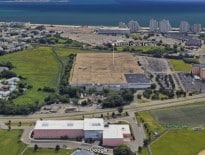Pop psychology quiz: What words come to mind when I say the phrase, “new apartment construction in the suburbs?”
If your response is a) school children; b) overcrowded classrooms; or worse, c) Section 8 families, you may have a touch of NIMBY Derangement Syndrome, which is unfortunately quite common in Massachusetts, particularly in the Greater Boston area.
The good news, though, it is a condition that is treatable with steady and routine doses of facts and reason, such as the findings of a recent survey out of the North Shore that puts lie to the fear that new rentals draw floods of families seeking to “freeload” on the local public school system.
Now to be fair, after speaking with Aaron Clausen, Beverly’s planning director, it doesn’t sound like the debate over new apartment construction has reached the toxic levels seen in some communities, like the well-heeled and deeply blue Newton.
However, Beverly is experiencing a mini-apartment boom, with new rentals taking shape downtown, many within walking distance of the T station.
There are 500 to 600 new apartments either in construction or approved for downtown in a number of different projects ranging from 44 units to 90, Clausen said. Most units contain one or two bedrooms, with rents for apartments close to the town’s T station ranging from $1,800 to more than $2,000 a month.
With downtown abuzz with new construction, Clausen found himself fielding reoccurring questions from some town officials and residents over the potential impact of this new construction on the town’s schools.
Beverly has seen student enrollment jump over the last few years, with the town in the midst of building a new middle school. So Clausen decided to undertake an informal, yet detailed survey of the number of school children living in different types of housing in town.
Clausen tallied the number of school children living in downtown apartments, suburban-style apartments outside of downtown and single-family homes, looking at both new and existing units and homes. What he found was revealing.
The type of housing with the highest number of students living were not rentals, but rather single-family homes, with one school-age child per 3.7 homes. That number is likely higher, Clausen said, given that he was only counting children enrolled in Beverly’s public schools, with a number of popular private schools in the area as well.
For suburban-style apartment complexes, the number was comparable but a little lower, with one student for every four apartments.
And what of Beverly’s growing array of downtown apartments? Well, there is one student for every 30 apartments downtown.
It’s a finding, though, that should not be all that surprising. After all, except in the overheated imaginations of a few, loud-mouthed NIMBY grumps, the people moving into the new downtown rentals tend to be young professionals using the T to commute into the city.
The data collected by Clausen also addresses another perception, that Beverly is undergoing an unprecedented building boom.
Beverly is hardly alone, with a smattering of highly visible new apartment communities in the suburbs having convinced some that their communities are somehow being overrun by rapacious developers.
Yet the last high point for new housing construction in Beverly was two decades ago, in the 1990s, Clausen said, with 40 percent of the homes, apartments and condos in town built before 1940.
In fact, the number of new housing units built in Beverly fell from 742 in the 1990s down to 492 for all the 2000s. The first four years of the current decade weren’t much better, with just 168 new apartments, homes and condos, with the pace of new construction only now starting to get back to where it was two decades ago.
The numbers out of Beverly point to a larger trend in terms of the highly skewed perceptions of new housing development in the Boston area.
Young families moving to Capes, ranches and Colonials built years or even decades ago are more likely to drive up school enrollment in the suburbs than new apartment buildings, especially of the downtown variety.
Given the dwindling number of new homes being built, this influx of young families is being driven by older homeowners downsizing and moving on to the next phase of their lives.
Yet new apartment construction, especially of the variety taking shape in Beverly, Natick and any number of suburban town centers in the Boston suburbs, have become a lightning rod over concerns about school costs simply because they are so highly visible.
In fact, much of the growth driving school enrollments in the suburbs up occurred well before many of these new apartment projects began to take shape.
So here’s a suggestion: The next time you hear someone grumbling about how all those new apartments are going to overload your town’s school system, be bold and push back. After all, you have the facts on your side.









